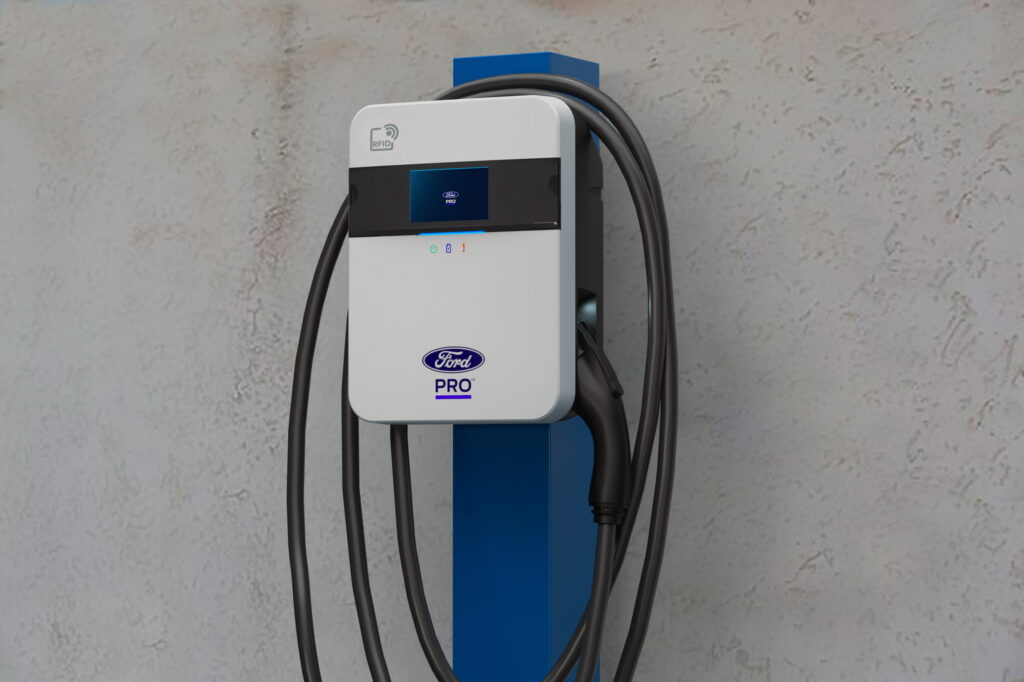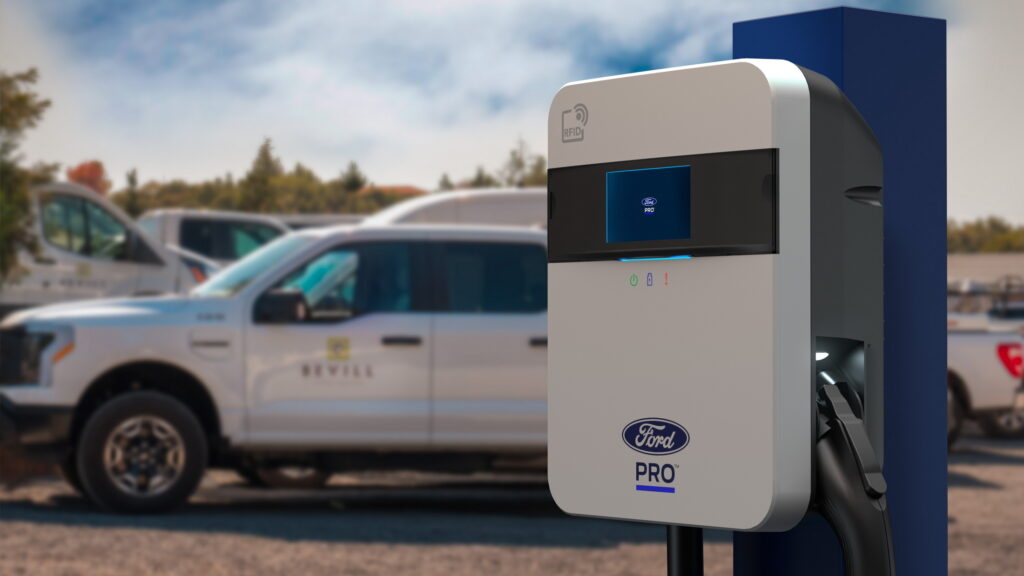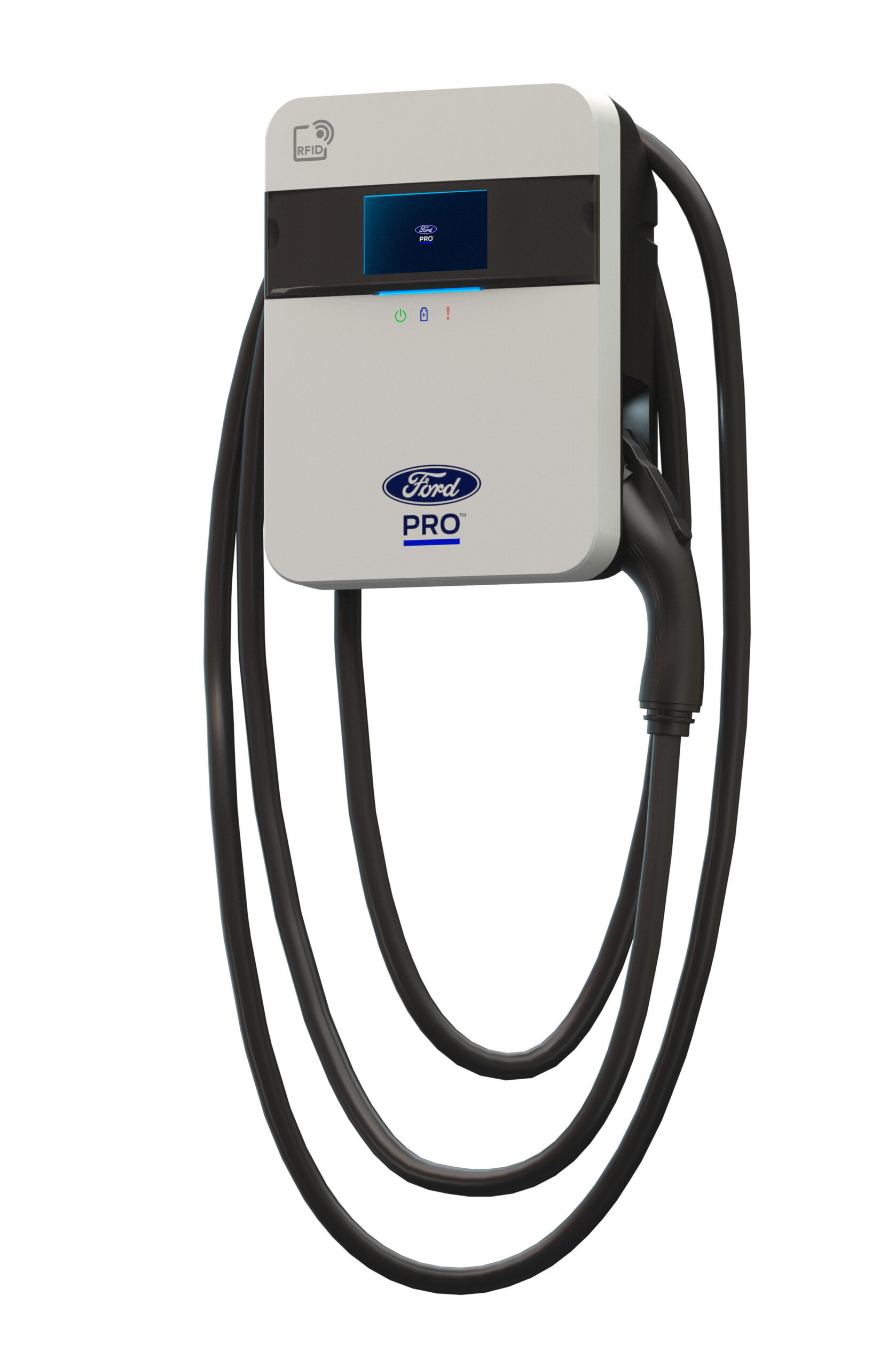The thing about making a new kind of vehicle that runs on a new kind of energy (electricity) is that automakers also have to introduce new infrastructure to serve them. Ford Pro is calling that an opportunity and, with its second generation of charging equipment for fleet customers, it’s showing everything it’s learned so far.
Ford’s commercial vehicle operation is introducing the Series 2 AC Charging Station and is expanding DC Fast Charger options too. New designs will make the equipment easier to use, safer, and cheaper to fix.
For example, the constituent parts of Ford’s new Series 2 AC Charging Station 80 amp can be separated from the main body. That means that if a wire is broken, say, the customer can simply replace that instead of the whole unit, making it cheaper to operate.
Read: Ford Killing Three Gas Models, Spending Billions More On Electric Vehicles

The charger also comes with a range of cellular connectivity, WiFi, and Ethernet connectivity options, a new LCD screen, temperature sensors, and more. In addition, it’s capable of over-the-air updates that will allow it to log and identify specific vehicles, meaning that it will be able to work with Ford’s next generation of electric vehicles.
It will also have enhanced security with RFID tags that can prevent outside EVs from sneaking a cheeky charge from a fleet owner’s equipment. That same technology also allows customers to track energy reports and charging management data.
For the DC Fast Chargers, Ford Pro has revealed options with 180 kW and 240 kW capabilities to lower charge times. The new chargers also come with aluminum pedestals, and feature a sleeker design and can now be pre-ordered.
“We’re committed to helping businesses make the transition to electric easy with a single-minded focus on curated commercial charging solutions,” said Ted Cannis, Ford Pro CEO. “With our tailored EV consulting and portfolio of charging hardware and software solutions, we can design, implement and operate solutions for Ford and other brands that will last for many years to come. And we are not afraid to tell customers when electrification is not yet a good fit and support them with other solutions.”









